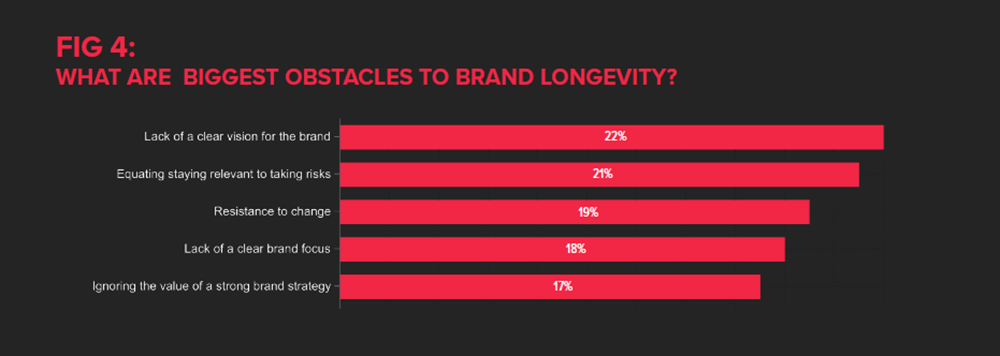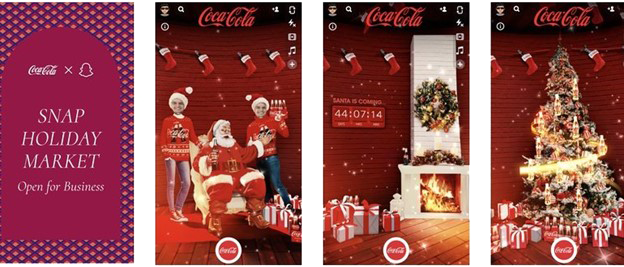Technology has continued to play a pivotal role in how brands interact with consumers. For instance, this year we saw a strong increase in companies taking to social media platforms to introduce new e-commerce shops, such as Instagram, which expanded its in-app purchasing capabilities by enabling consumers to purchase directly from advertisements seen on the platform. We’ve also seen brands collaborating more closely with agency partners to launch augmented reality (AR) experiences to attract new customers and raise overall brand awareness.
These developments are just some of the unique and creative ways brands are exploring to strengthen their longevity and keep current customers engaged, while also showcasing their ability to adapt in real time to our digital-first world. As discussed in previous posts, our research on Brand Longevity shows that in the brand ecosystem, Technology is one of the most important drivers of longevity (Brand Heritage being the other most important driver). However, if not leveraged properly, brands could find themselves lost in the crowd of companies aiming to capture the loyalty of audiences old and new.
We spoke with our in-house digital team about what the last year has taught them when evaluating a brand’s longevity and how brands can best adopt the latest technology trends to be successful. Here are some of their thoughts…
A Digital Renaissance
This past year has proven to be somewhat of a digital renaissance for brands, meaning that every company and brand had to reemerge as a digital company to some degree and find ways to ensure their business could stay relevant and accessible to their customers. While the speeds at which this digital transformation took place may be pandemic-induced, it was always inevitable. The digital landscape is ever-changing, and at a rapid pace; brands need to continue taking the initiative to become more digitally friendly and accessible to consumers through various online mediums. That doesn’t necessarily mean all brands needs to be focused on developing their own digital platforms — that’s a quick way to get lost in the noise. It is about how a brand can strategically adopt current platforms and tailor the use of them to best reach target audiences.
While Brand Heritage is something that is unable to be changed due to the foundation of the brand itself, Technology can be molded and is flexible enough to fit into the changing needs of everyday customer behaviors. They go hand-in-hand — to maintain Brand Heritage, you have to be willing to take risks to find ways to stay relevant and accessible, and as 2021 taught us, Technology is what has been a driver for brands to reestablish themselves as staples in people’s everyday lives.
Successful Risk-Taking and Establishing Brand Heritage in the Digital Age
When asked about what attributes brands with longevity shared, the 400 marketing professionals — who were surveyed as part of our national research with The Harris Poll — highlighted that a lack of clear vision was an obstacle for a brand’s longevity. However, nearly as many marketers said the same about brands who equate staying relevant with taking risks. For brands, this year was all about taking risks and taking on challenging new efforts to spread awareness to audiences inundated with digital content in their professional and personal lives.

From the consumer perspective, however, they believe that Product is more than twice as important as a brand’s Vision and Values, which often plays a role in a brand’s willingness to take risks, followed by Technology (Digitalization, Media, and Adaptability). It is key that marketers not lose sight of the importance of their product — this includes the quality and overall success of the product in the marketplace. Technology and product success have become more intertwined in the past two years, as Gen Z and Millennials are most accessible through mobile-friendly marketing. The most popular shift for consumer-friendly brands was incorporating a new form of e-commerce to their business models — shifting from the traditional dot com landing pages for shopping and partnering with social media platforms like Instagram and Snapchat to merge commerce with social media.
Most recently, Snapchat launched six immersive augmented reality (AR) experiences on Black Friday with Amazon Prime Video, Coca-Cola, Hollister, Under Armour, Verizon, and Walmart. Each brand had a dedicated virtual storefront that allowed customers to browse products and Black Friday deals.

Source: Marketing Dive
Many of these brands are what we consider “heritage brands”— brands that have an established legacy and proven long-term success. These brands took a risk in creating and launching these virtual store fronts during the holiday shopping season in efforts to maintain their current consumer base, but also to reach new ones. They are prime examples of how Brand Heritage and Technology go hand-in-hand. Brand Heritage and Technology reflect the actions, both past and ongoing, that define the legacy and future of brands. They are elements that are continually shaped over time by key brand decisions, and which form the central tension of continuity and change behind brand longevity. They should not be seen as standing in opposition, but as working in tandem to establish and renew brands through time. We are starting to see more of these heritage brands stepping out of their traditional marketing efforts and into new and more engaging methods of marketing. Even luxury fashion brands like Fendi and Dior are launching AR shopping lenses to expand their customer reach during the holiday shopping season.
We will continue to see a rise in augmented and virtual reality content. Already, consumers are starting to see this particular technology become more accessible for the everyday user. Within the next year, we can expect this to be a new standard way of consuming content.
Hello, 2022!
The creative use of emerging technologies is an important consideration for all brands, whether it be consumer or business-to-business. The impact of how consumers react to a brand’s use of such technology reaches both ends of the spectrum. This goes beyond traditional earned media efforts, and we predict we will see more companies adopt an integrated Paid, Earned, Shared, and Owned (PESO) media approach in the upcoming year. This includes more companies tapping into podcasts or other types of digital content to increase and present a more authentic voice to their brands and reach new and existing customers.
As 2021 winds down, the overall importance of adaptability and accessibility will continue to be a main focus for brands to maintain their longevity. Those brands who do not accelerate their digital transformations will not be able to rest solely on heritage for future success, and will risk a decline in customer engagement as we move into a post-pandemic era.